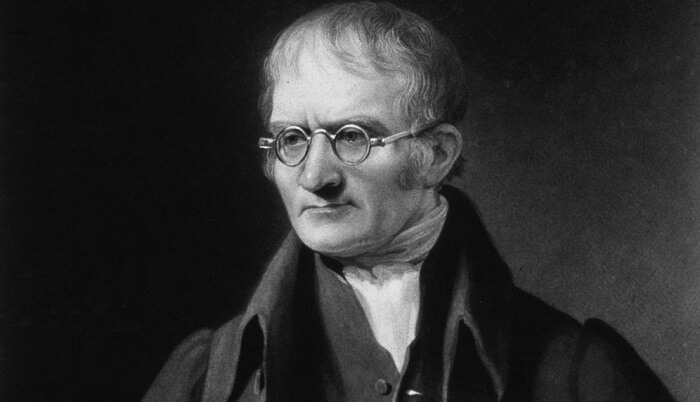The 19th century gave definitive shape to atomic theory: Who is John Dalton?
He found a series of laws named after him in the fields of physics and chemistry, which contributed to making chemistry a separate science from his work. Most of his valuable works were lost during the German bombardment during World War II.

English physicist and chemist. He was born on September 6, 1766, in Eaglesfield, Cumberland. He died on 27 July 1844, at the age of 77, in Manchester, England. With his work on the atom, he gave definitive shape to the 19th-century atomic theory.
Together with his older brother, he began his education at a boarding school in Kendal (1781). Later, he worked as a teacher and administrator in the same school. In 1793 he was appointed teacher of mathematics and science at the Manchester Academy (now New College). He studied the disease of James Prescott Joule, whom he realized from one of his students there, that he was colorblind, and published the first known article on this disease in 1794. That's why color blindness is also called Dalton's Disease. In 1799 he was appointed director of the Manchester Literary and Philosophical Society. He made his first observations in physics and chemistry in meteorology with the encouragement of a vehicle maker named E Robinson. He turned to investigating why the gases that make up the atmosphere, despite their different densities, are in a homogeneous mixture rather than dissociated.
John Dalton (5 or 6 September 1766 – 27 July 1844) was an English chemist, physicist and meteorologist. He is best known for introducing the atomic theory into chemistry, and for his research into colour blindness, which he had. Colour blindness is known as Daltonism in several languages, being named after him.
He showed that all liquids with equal temperatures and boiling points have the same saturated vapor pressure, and based on this result, he demonstrated that all gases can be liquefied at sufficiently low temperatures and high pressures (1801). Continuing his work in the same direction, he found the law explaining the expansion of gases with temperature in 1802, at the same time as J L Gay-Lussac. By examining the dissolution of gases in water and other liquids, he concluded that different gases dissolve in the same liquid at different degrees and that each gas consists of different weights and numbers of particles. One of his most important inventions is the Law of Multiple Proportions. Using this law, he established the Atomic Theory of the structure of matter. He found a series of laws named after him in the fields of physics and chemistry, which contributed to making chemistry a separate science from his work. Because of his religious beliefs, he preferred a simple life and never married. He also did not accept membership in the Royal Society for a long time. He was elected to the French Academy of Sciences in 1816.
John Dalton died in Manchester at the age of 77. A statue has been erected here. Most of his valuable works were lost during the German bombardment during World War II.
Major works:
Meteorological Observations and Essays 1793;
A New System of Chemical Philosophy 1801;
On the Absorption of Gases by Water 1803.
